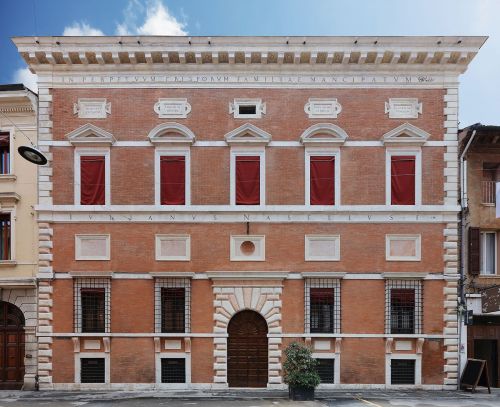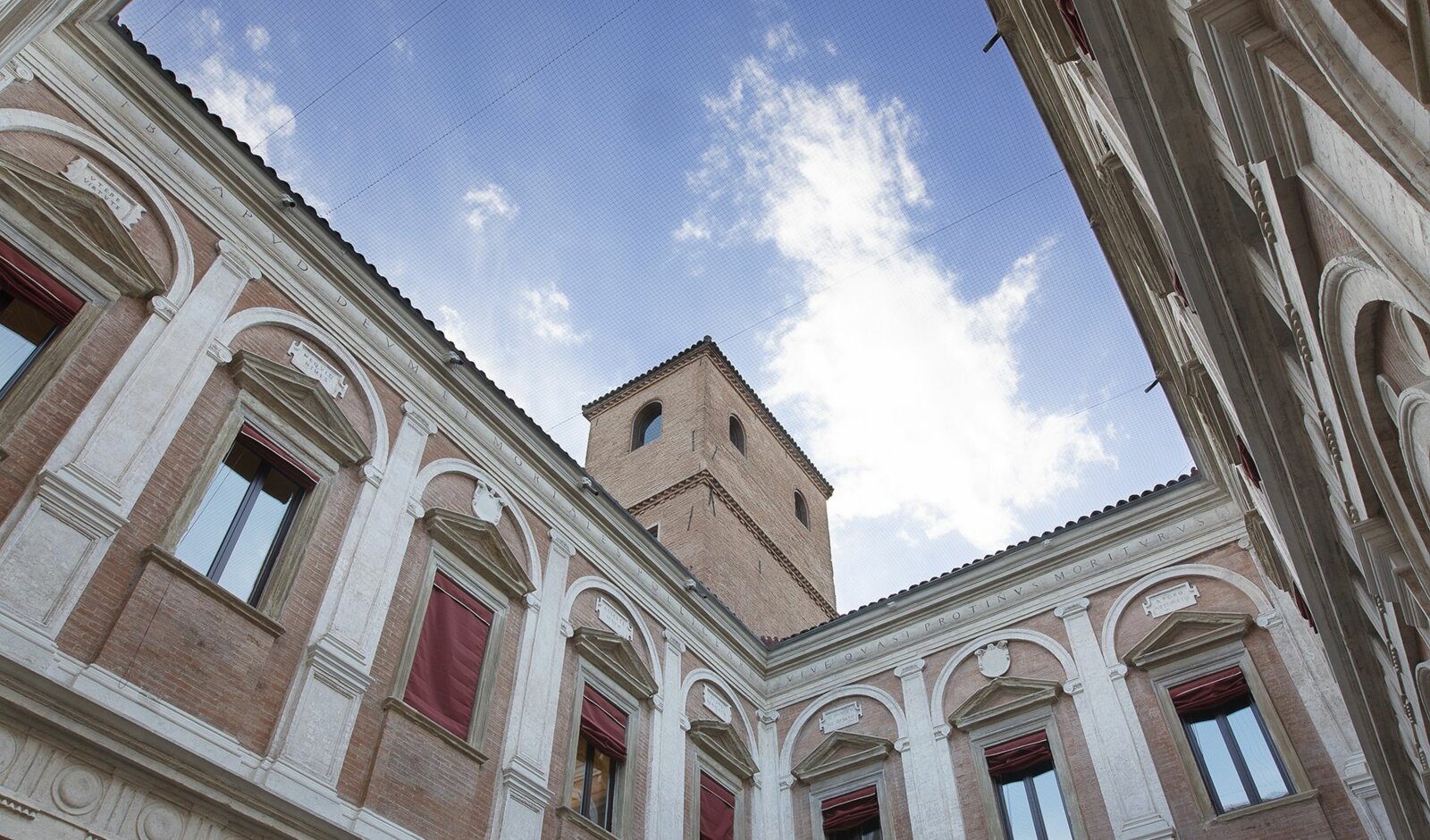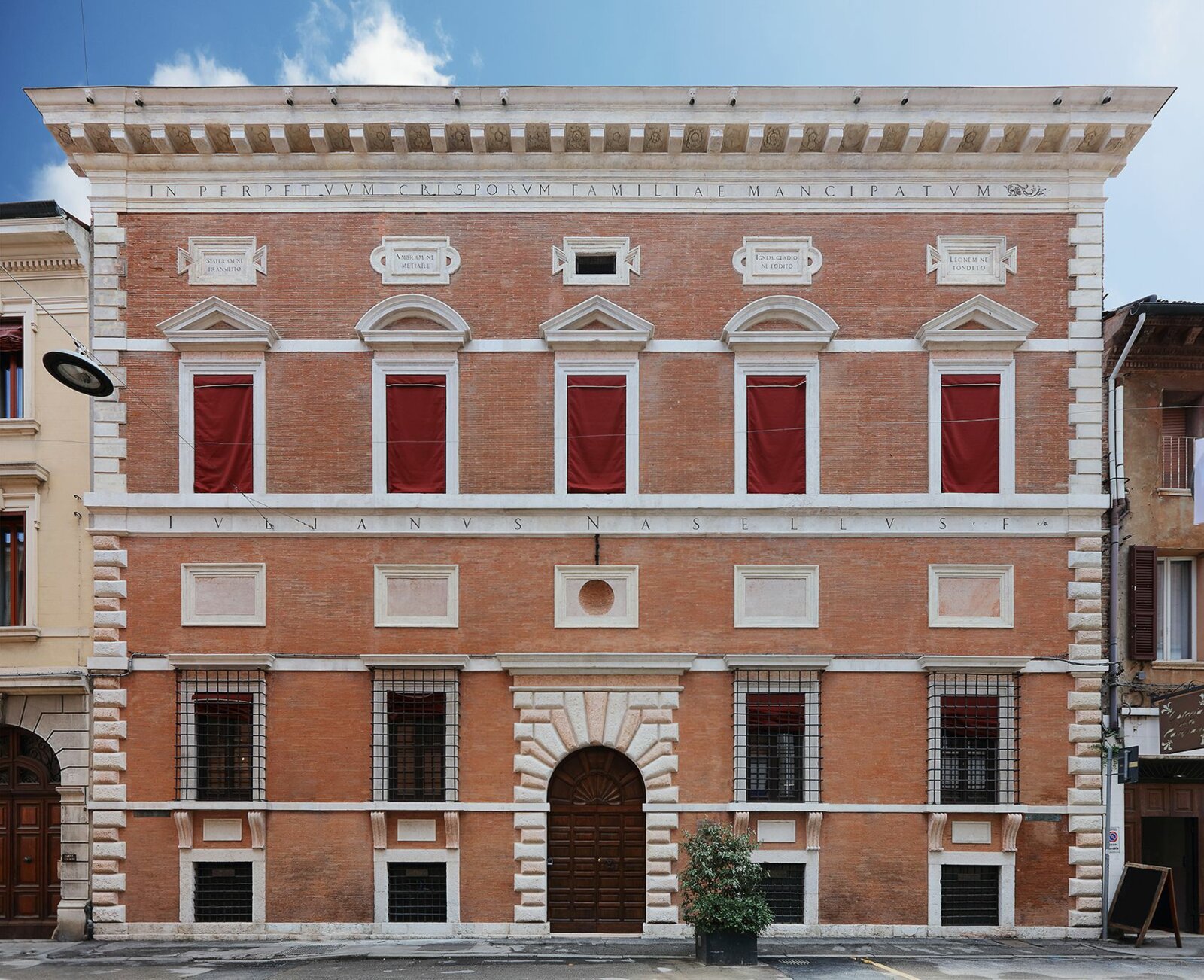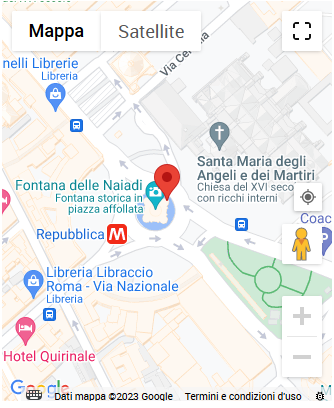You might also be interested


Palazzo Naselli-Crispi
Walking down the very central Via Borgo dei Leoni, you will surely happen to pass by a palace that will catch your attention because of its marvellous facade. This palace also hides an incredible architectural richness inside.
Palazzo Naselli-Crispi is one of the most beautiful historical residences in Ferrara. Since 1922, it has been the headquarters of the Consorzio della Grande Bonificazione, now Consorzio di Bonifica Pianura di Ferrara since 2021, after the post-earthquake restoration work, has decided to open it periodically to visitors.
Historical Notes
Designed at the height of the Renaissance by Girolamo da Carpi, a student of Garofalo, Palazzo Naselli Crispi was built entirely in terracotta, an expression of the architect's flair and skill in the structure and decoration of the interiors. Just a short distance away from the Castello Estense, this building is a rare example of a Roman-inspired dwelling in the heart of Ferrara, an example of early 16th-century civil architecture.
Commissioned by Giuliano Naselli in 1533, it became the property of Giovanni Maria Crispi in 1569, who later expanded the building by purchasing a neighbouring house.
It was enriched by the magnificent courtyard characterized by motifs inspired by the architecture of Bramante, Raphael and Antonio da Sangallo the Younger. Such influences were key to the design of this space, which was further embellished with Latin philosophical mottos inscribed on the tabellars and cornices of the facade and courtyard.
In addition to being a wonderful example of Renaissance architecture, Palazzo Naselli-Crispi houses a valuable collection of the Catasto Carafa, which displays original historical maps from the 18th century.
You may not know about...
THE ILLUSION OF A ROMAN PALACE. Though the palace's rectangular courtyard is inspired by Rome's Teatro Marcello, its most striking feature are its dimensions: the courtyard is very small but appears large and airy to the eye thanks to the architect's great wisdom on optical illusions.



